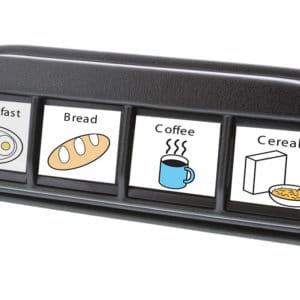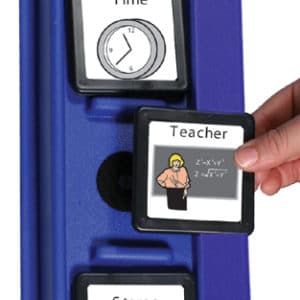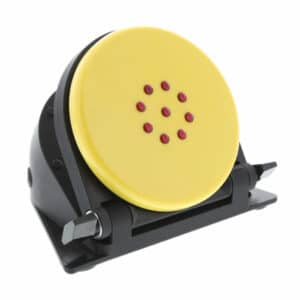Communicators — AAC Devices
Communicators, also known as Augmentative and Alternative Communication (AAC) devices, are tools children and adults who are non-speaking or have difficulty speaking can use to communicate. The goal of these devices is to help those with communication or speech disorders interact more effectively with others and improve their language and social skills through means of unaided communication, such as gestures and facial expressions.
With intuitive AAC buttons and devices, individuals with disabilities can navigate complex communication requirements and express themselves more easily. At Enabling Devices, we’re committed to providing the solutions children and adults with special needs require to engage with the world in new ways. You can trust us to partner with you and provide unique options to enrich the lives of individuals with disabilities and those who work with them.
Categories
- Accessories
- Communicators — Big and Small Talks
- Communicators — Cheap Talks
- Compartment Communicators
- Icon Holders & Makers
- Language Development
- Mountable Communicators
- Non-Voice Communicators
- Progressive Communication Devices
- Say It Play Its
- Scanning
- Sequencer Communicators
- Simple Communication Devices
- Take & Talk Series
- Talkables
- Visually Impaired
- Wearable Communicators
-
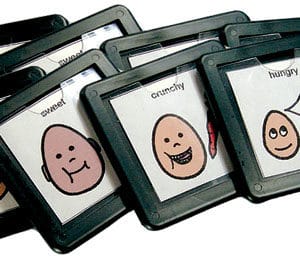 3″ x 3″ Icon Holder KitSKU #430-IThis kit contains 8 black icon holders and comes with Velcro stickers as well as a sticky back magnetic sheet.$52.95
3″ x 3″ Icon Holder KitSKU #430-IThis kit contains 8 black icon holders and comes with Velcro stickers as well as a sticky back magnetic sheet.$52.95 -
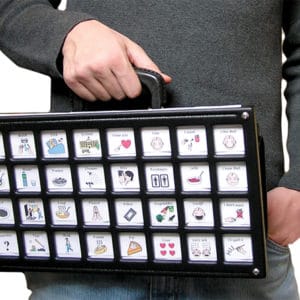 32 Message CommunicatorSKU #3206Ideal for more advanced communicators, this lightweight, durable, portable unit has six levels and room for 192 three-second messages. To view accessories for this item click accessories tab below or see item #4069X.$439.95
32 Message CommunicatorSKU #3206Ideal for more advanced communicators, this lightweight, durable, portable unit has six levels and room for 192 three-second messages. To view accessories for this item click accessories tab below or see item #4069X.$439.95 -
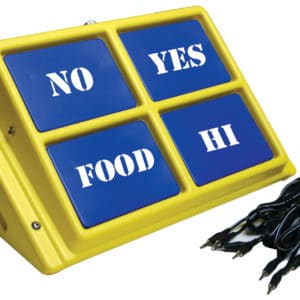 4 Plate Communicator Say It Play ItSKU #4055A wonderful option for users who need a large target area, this 60-square inch communicator has four 3" x 5" plate switches, can be positioned at a 30 or 70-degree angle and requires only gentle pressure for activation.$199.95
4 Plate Communicator Say It Play ItSKU #4055A wonderful option for users who need a large target area, this 60-square inch communicator has four 3" x 5" plate switches, can be positioned at a 30 or 70-degree angle and requires only gentle pressure for activation.$199.95 -
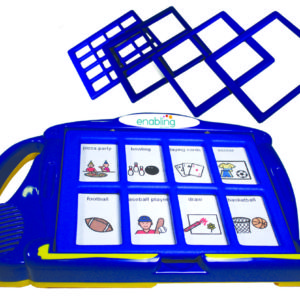 4-Level Communication BuilderSKU #7077A progressive communication device that grows with the user, this four-level communicator is equipped with five interchangeable frames. To view accessories for this item click accessories tab below.$409.95
4-Level Communication BuilderSKU #7077A progressive communication device that grows with the user, this four-level communicator is equipped with five interchangeable frames. To view accessories for this item click accessories tab below.$409.95 -
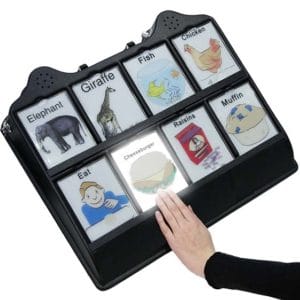 4″ x 5″ Communicator for the VISKU #7083Specially designed for the visually impaired, this state-of-the-art communicator has 12 levels, scanning capabilities and large brightly illuminated targets that make it possible to see, select and activate messages. To view accessories for this item click accessories tab below.$464.95
4″ x 5″ Communicator for the VISKU #7083Specially designed for the visually impaired, this state-of-the-art communicator has 12 levels, scanning capabilities and large brightly illuminated targets that make it possible to see, select and activate messages. To view accessories for this item click accessories tab below.$464.95 -
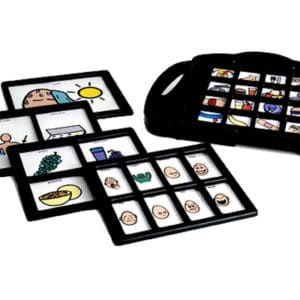 7-Level Communication BuildersSKU #7075WOur best-selling progressive communication builder grows along with you. Start with one message and grow to sixteen. Available in blue or black. To view accessories for this item click accessories tab below.$399.95
7-Level Communication BuildersSKU #7075WOur best-selling progressive communication builder grows along with you. Start with one message and grow to sixteen. Available in blue or black. To view accessories for this item click accessories tab below.$399.95 -
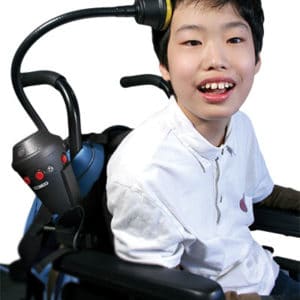 Announcer w/6 LevelsSKU #5015Our sequencer communicator allows the user to first hear a series of words and then select one by simply activating its capability switch.$325.95
Announcer w/6 LevelsSKU #5015Our sequencer communicator allows the user to first hear a series of words and then select one by simply activating its capability switch.$325.95 -
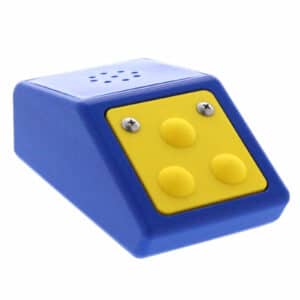 Auditory Communicator 16-LevelsSKU #4399Just right for those unable to use a multi-button communicator due to visual or physical impairments, this unique communicator scans through pre-recorded messages at a volume that only the user can hear.$199.95
Auditory Communicator 16-LevelsSKU #4399Just right for those unable to use a multi-button communicator due to visual or physical impairments, this unique communicator scans through pre-recorded messages at a volume that only the user can hear.$199.95 -
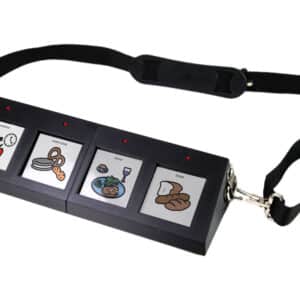 Basic Talk 4SKU #4047BCommunicating is simple with this ergonomically designed, portable and lightweight device. Press one of four light touch message squares to play a 5-second message.$209.95
Basic Talk 4SKU #4047BCommunicating is simple with this ergonomically designed, portable and lightweight device. Press one of four light touch message squares to play a 5-second message.$209.95
Communicators: Frequently Asked Questions
Whether you’re a teacher or parent of children with special needs, you likely have many questions about how these devices work, how they enhance communication and what types of communication devices are available. Here are some of the most commonly asked questions about AAC devices.
Who Benefits From AAC Devices?
Many children and adults with complex communication needs benefit from AAC devices in their daily lives. Some people use a communication device temporarily after an accident or surgery. Others use communication devices all the time to aid in talking to strangers, friends, therapists, coworkers and more.
Whether in a classroom, at home or on the go, an AAC device is a helpful tool for anyone who struggles with speech or communication. People who might benefit from communication devices include:
- Those with Autism Spectrum Disorder
- People with Cerebral Palsy
- Individuals recovering from a stroke
- People with Amyotrophic Lateral Sclerosis (ALS)
- People with Down syndrome
- People with Aphasia
- Those who are paralyzed
With a variety of communicators to choose from, it’s possible to find a device that works for anyone. We offer a wide range of AAC devices to fit the unique needs of our users. By empowering individuals with disabilities to communicate with caregivers, teachers, family and peers, our devices can help reduce frustration and anxiety.
How Do Communication Devices Assist Children and Adults With Complex Communication Needs?
The goal of all communication devices is to assist individuals with a wide range of communication needs by aiding non-verbal communication. Typically, they allow a user, therapist or caregiver to record messages. Then, in order to play them back, the person using the device just needs to press a button or activate a switch.
Speech-language pathologists and special education teachers work with children and adults with speech disorders to enhance their language and communication skills by gradually introducing more complex communication devices.
AAC includes unaided forms of communication, such as gestures, facial expressions, manual signs (ASL or individually specific signs) or drawing pictures. An AAC device provides an aid to communication. Devices can be low-tech, such as picture or letter boards, or mid-tech, such as recorded voice output communicators like Enabling Devices’ Talkables line of communicators.
With a mid-tech AAC device, a person with a communication disorder or other disability can convey messages and get peoples’ attention using sound, even if they’re unable to do so using their own voice. Subsequently, communication devices are useful in all sorts of settings, including:
- Classrooms
- Homes
- Therapy
- Public places
The speech-generating devices we offer can meet a variety of needs. These products range from simple one- and two-message devices, to multi-level devices that help individuals with speech impairments share more complex feelings and preferences with their caregivers, family and friends.
What Are the Types of AAC Devices?
Enabling Devices offers the largest variety of mid-tech speech-generating communication devices for people with disabilities. Our AAC devices include a broad variety of communicators ranging from simple tools for one or two messages to more complex devices that include a combination of phrases. We also carry wearable communication devices and provide AAC classroom kits for students with special needs. Some of our devices can clip onto mobility devices to assist children with various physical abilities.
Here’s a quick list of the types of communicators we offer:
- One-message communicators: These devices play one recorded message at the press of a button. These simple communicators are easy to use and can be re-recorded to change the message at any time.
- Two-message communicators: Like one-message communicators, these devices play recorded messages when activated. They’re an effective next step in simple communication.
- Progressive communicators: Progressive speaking devices can grow along with the user. They display multiple icons with messages, and record multiple levels, and are great for developing language skills.
- Wearable communication devices: Wearable AAC devices make it easier for individuals to communicate while on the go. We offer devices that can be worn on the hip, arm, leg or wrist.
- Devices for classrooms: Communication devices in the classroom can help students learn and get involved. Mountable devices to put around the room can be especially helpful.
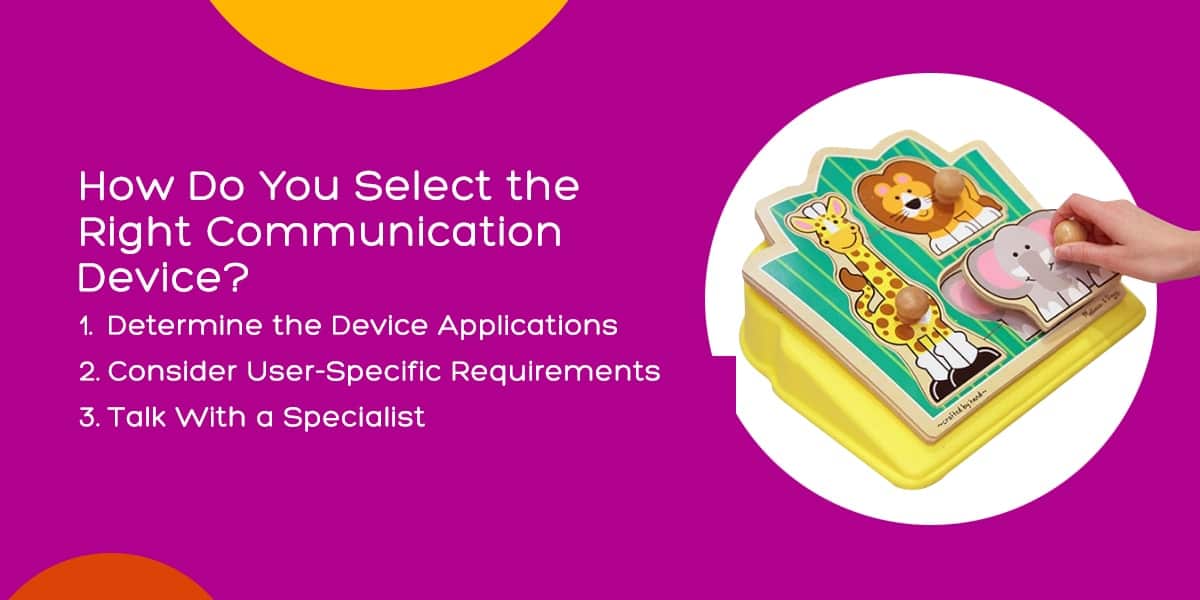
How Do You Select the Right Communication Device?
To pick the best adaptive communication device for an individual, consider the following:
1. Determine the Device Applications
What does the user needs to communicate? Will they be answering yes or no questions? If so, a two-message communicator could work. Expressing more complex feelings and emotions? Then a device with more message capacity is probably in order. Communicating in a public setting? Try a wearable device.
Give thought to the product’s day-to-day applications and key objectives, and determine what is most important in the device you choose. The size and sensitivity of the device might be important, as well as whether it can easily be mounted to a wheelchair, bed rail, walker or tray.
2. Consider User-Specific Requirements
You also need to consider any other disabilities the user might have. People with motor restrictions benefit from communicators with larger buttons, and people with a visual impairment might need high-contrast icons or audio cues to select messages. Knowing the user’s strengths and weaknesses can help you identify the device that will work best for them. It’s critical to evaluate the person’s needs holistically to find the right solutions.
3. Talk With a Specialist
Consulting a speech therapist or AAC expert will help you find devices that meet your needs. If you’re trying to decide what option is the best fit, it’s a good idea to reach out to someone who can offer some additional insight. A specialist will help you find the optimal AAC device for the user.
Is Learning With an AAC Device Difficult?
Some parents or teachers believe AAC devices can be too difficult for certain students to learn. But for most individuals, an AAC device can be introduced successfully.
As with any new concept or tool, it may take time for your child or student to learn how to use it. Remember that every child has different needs and abilities, so some may need more time to learn than others.
As each child learns how to use their AAC device and communicate effectively, they may gradually rely on it less and less, or even stop needing it. Children with certain disabilities who remain non-speaking, however, can still benefit greatly from using these devices long-term and develop strong skills in language growth.
How Do You Implement an AAC Device?
Implementing an AAC device depends largely on the needs of your child or student and whether they’re already using a communication device.
If you’re introducing AAC devices for the first time, you can start with simple words and phrases, such as:
- Yes
- No
- Eat
- Go
- I want
- I feel
When working with your child or student, it’s important to use the device yourself and model the actions. Understand the basics of the device and familiarize yourself with the communication buttons, switches or recorded messages. Whether or not the child responds as you begin to practice with the device, they’ll still be learning!
Facts and Statistics About AAC Devices
Research shows that about 5 million people in the United States and approximately 97 million people globally could benefit from AAC devices.
Despite the many myths about AAC devices, it’s important to focus on the research that describes the positive outcomes for those who use these communicators.
Some parents think that if they use a communication device for their children with special needs, they’ll never learn to speak. There’s no evidence that AAC devices slow down, limit or stop a child from speaking. In fact, research indicates those who use AAC devices develop their speech faster compared to those who don’t.
Research also indicates that AAC devices have a positive impact on the development of communication skills for those with Autism Spectrum Disorder (ASD). Additionally, this study suggests that AAC helps reduce certain behavioral issues by promoting healthy social skills and positive communication in those who are minimally verbal.
In a study conducted with children with Down syndrome, each participant demonstrated significant increases in communication frequency with as little as 15 minutes of interaction with AAC devices. A 2020 study found that late-talking toddlers who used AAC devices increased the number of words they used by over 600%.
This evidence supports the overall goals of AAC devices, which include:
- Enhancing language learning
- Facilitating social interaction
- Providing contextual support for displaced talk
- Improving literacy skills
- Increasing participation in society
- Teaching interaction strategies
Buy Augmentative and Alternative Communication (AAC) Devices From Enabling Devices
Whether you’re researching communication devices for the first time or looking to update your child’s current device, it’s important to rely on tools and products that support their day-to-day needs and activities. All children and individuals with special needs deserve to communicate in a way that is comfortable, reduces frustration, and helps them engage with their community.
At Enabling Devices, it’s our mission to create effective, unique products that help individuals with special needs and disabilities improve their communication and provide them with more opportunities to interact with those around them. Our products are specifically designed to meet an extensive range of physical, cognitive and educational needs.
If you’re hoping to open up new means of communication, try out one of our speaking devices, or contact us for more information today.
